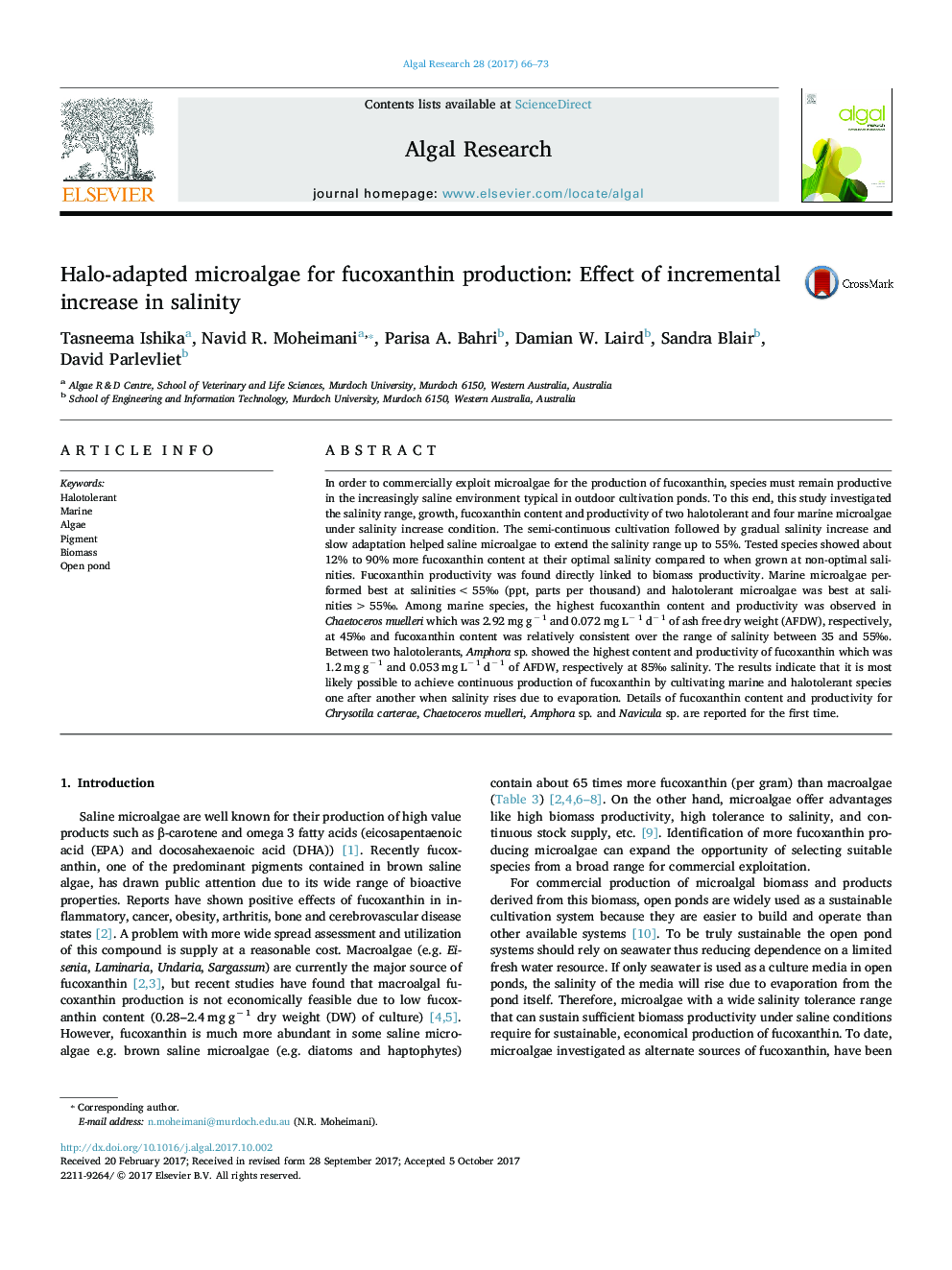| کد مقاله | کد نشریه | سال انتشار | مقاله انگلیسی | نسخه تمام متن |
|---|---|---|---|---|
| 8086349 | 1521805 | 2017 | 8 صفحه PDF | دانلود رایگان |
عنوان انگلیسی مقاله ISI
Halo-adapted microalgae for fucoxanthin production: Effect of incremental increase in salinity
ترجمه فارسی عنوان
میکروالگوهای سازگار با هاله برای تولید فوکوکسانتیین: اثر افزایشی در شوریت
دانلود مقاله + سفارش ترجمه
دانلود مقاله ISI انگلیسی
رایگان برای ایرانیان
کلمات کلیدی
هالوتولرانت، دریایی، جلبک، رنگدانه، زیست توده، حوضچه باز
موضوعات مرتبط
مهندسی و علوم پایه
مهندسی انرژی
انرژی های تجدید پذیر، توسعه پایدار و محیط زیست
چکیده انگلیسی
In order to commercially exploit microalgae for the production of fucoxanthin, species must remain productive in the increasingly saline environment typical in outdoor cultivation ponds. To this end, this study investigated the salinity range, growth, fucoxanthin content and productivity of two halotolerant and four marine microalgae under salinity increase condition. The semi-continuous cultivation followed by gradual salinity increase and slow adaptation helped saline microalgae to extend the salinity range up to 55%. Tested species showed about 12% to 90% more fucoxanthin content at their optimal salinity compared to when grown at non-optimal salinities. Fucoxanthin productivity was found directly linked to biomass productivity. Marine microalgae performed best at salinities < 55â° (ppt, parts per thousand) and halotolerant microalgae was best at salinities > 55â°. Among marine species, the highest fucoxanthin content and productivity was observed in Chaetoceros muelleri which was 2.92 mg gâ 1 and 0.072 mg Lâ 1 dâ 1 of ash free dry weight (AFDW), respectively, at 45â° and fucoxanthin content was relatively consistent over the range of salinity between 35 and 55â°. Between two halotolerants, Amphora sp. showed the highest content and productivity of fucoxanthin which was 1.2 mg gâ 1 and 0.053 mg Lâ 1 dâ 1 of AFDW, respectively at 85â° salinity. The results indicate that it is most likely possible to achieve continuous production of fucoxanthin by cultivating marine and halotolerant species one after another when salinity rises due to evaporation. Details of fucoxanthin content and productivity for Chrysotila carterae, Chaetoceros muelleri, Amphora sp. and Navicula sp. are reported for the first time.
ناشر
Database: Elsevier - ScienceDirect (ساینس دایرکت)
Journal: Algal Research - Volume 28, December 2017, Pages 66-73
Journal: Algal Research - Volume 28, December 2017, Pages 66-73
نویسندگان
Tasneema Ishika, Navid R. Moheimani, Parisa A. Bahri, Damian W. Laird, Sandra Blair, David Parlevliet,
